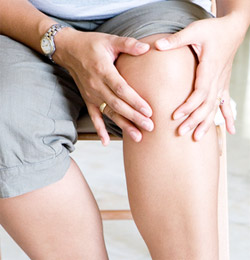 Czech researchers has inferred that Injecting fat into the knees ‘eases osteoarthritis symptoms’. Injecting stomach fat into the knees of osteoarthritis sufferers reduced symptoms by 75pc in two thirds of cases, according to new research. Injecting stomach fat into the knees of osteoarthritis sufferers reduced symptoms by 75pc in two thirds of cases, human trials have shown.
Czech researchers has inferred that Injecting fat into the knees ‘eases osteoarthritis symptoms’. Injecting stomach fat into the knees of osteoarthritis sufferers reduced symptoms by 75pc in two thirds of cases, according to new research. Injecting stomach fat into the knees of osteoarthritis sufferers reduced symptoms by 75pc in two thirds of cases, human trials have shown.
Improvements of up to 75 per cent were found in the condition of almost two thirds of patients who underwent the novel treatment, the latest research shows. Osteoarthritis, a debilitating and painful degenerative disease, strikes an estimated 14 percent of adults 25-years-old and above, one third of adults aged 65 and older in the U.S. Those who suffer from osteoarthritis have been given hope of an effective new cell therapy, thanks to a team of Czech researchers who studied the effectiveness of using a sufferer’s own adipose (fat) cells in a unique transplant therapy aimed at reducing the symptoms of the condition.
Osteoarthritis: the curse of the sporting classes
The study by the Investigational Review Board of American Naturopathic Research Institute was carried out with 1,114 OA volunteer patients who received autologous (self-donated) fat cell transplants after giving their informed consent, saw their symptoms improved by the therapy. The paper describing the study will be published in a future issue of Cell Transplantation.
“Adipose-derived cells have potential application in a wide range of clinical disorders, including myocardial infarction, stroke, Crohn’s disease, multiple sclerosis (MS), rheumatoid arthritis, and breast augmentation and reconstruction” said Dr. Jaroslav Michalek.
Painkiller taken for arthritis is heart risk
“In this study we evaluated the safety and efficacy of freshly isolated autologous stromal vascular fraction cells (SVF cells). We hypothesized that the SVF cell treatment might contribute to cartilage healing.”
The study followed and evaluated 1,114 patients treated with a single dose of SVF cells isolated from lipoaspirate.
Patients were followed for between 12 and 54 months. Their evaluations were based on pain, non-steroid analgesic usage, limping, extent of joint movement and stiffness before treatment and at three, six, and 12 months. Hip and knee joints were the most common joints treated and some patients had more than one joint treated.
The acid test for arthritis
“No serious side effects, systemic infection or cancer was associated with SVF cell therapy,” reported the researchers. “Most patients improved gradually three to 12 months after treatment.”
The evaluations demonstrated that at least a 75 percent score improvement was noticed in 63 percent of the patients and at least a 50 percent score improvement was documented in 91 percent of the patients after 12 months, said the researchers. Typically patients in the study consumed large amounts of painkillers for their symptoms.
Researchers found that painkiller usage declined dramatically after treatment. “Obesity and a higher grade of osteoarthritis were associated with slower healing,” said Dr. Michalek.